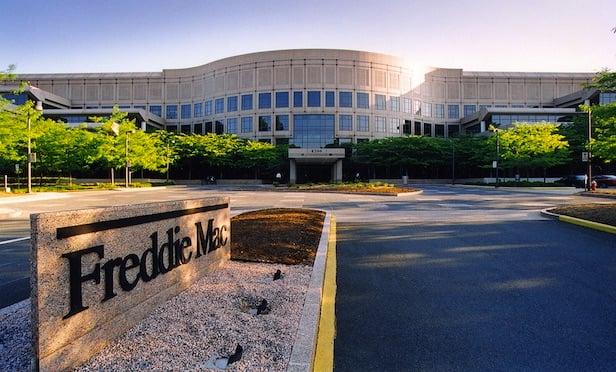➤➤ Join the GlobeSt.APARTMENTS (formerly RealShare) conference October 29-30 in Los Angeles. The event will analyze the opportunity in the emerging trends and conditions of the multifamily market. Don't miss out on joining the 1000+ of the industry's top owners, investors, developers, brokers and financiers as they gather for THE MULTIFAMILY EVENT OF THE YEAR! Click here to register and view the agenda.
WASHINGTON, DC—Earlier this month the Trump Administration put forth a plan to privatize Fannie Mae and Freddie Mac. Many of the outlined points required action from Congress to complete but the plan also included administrative steps that could be taken immediately. On Friday of last week with little fanfare or formality the Federal Housing Finance Agency radically changed how the GSEs will lend by taking one of those steps: it revised the cap structure on Fannie Mae and Freddie Mac's multifamily business.
The new multifamily loan purchase caps will be $100 billion for each GSE for the five-quarter period starting in the fourth quarter of 2019 to the fourth quarter of 2020. Also, the new caps apply to all multifamily business–in other words there are no more exclusions allowed.
"These new multifamily caps eliminate loopholes, provide ample support for the market without crowding out private capital, and significantly increase affordable housing support over previous levels," FHFA Director Mark Calabria said in prepared remarks. He also warned the GSEs need to make the capital last through the entire five-quarter period.
The new rules may be a blow to developers that have counted on the GSEs excluding green loans from their caps: Going forward loans that finance energy and water efficiency improvements will be considered conventional business, unless they meet affordability requirements. Indeed, the FHFA has put affordability front and center of the GSEs new mission, seemingly crowding out, at least in part, green lending.
As part of the new directive FHFA requires that at least 37.5% of the GSEs' multifamily business be affordable housing.
It was in 2014, when the FHFA began setting caps on the GSEs' conventional multifamily lending, excluding several categories of businesses from their cap. By 2016, loans that financed certain energy and water efficiency improvements were added to the list. By mandating that at least 37.5% of the lending be affordable housing and by eliminating caps, green loans will likely feel the pinch.
Critics have maintained that the cap exclusions were extending the reach of the GSEs by allowing them to underwrite more loans than the spirit of the regulations permitted and indeed, the Trump Administration proposal made this very point. "In part because of these broad exemptions, the caps have not been effective in limiting the GSEs' multifamily footprint. The GSEs have grown from owning or guaranteeing 25% of outstanding multifamily debt in early 2008 to almost 40% today," the proposal said.
© Touchpoint Markets, All Rights Reserved. Request academic re-use from www.copyright.com. All other uses, submit a request to [email protected]. For more inforrmation visit Asset & Logo Licensing.








